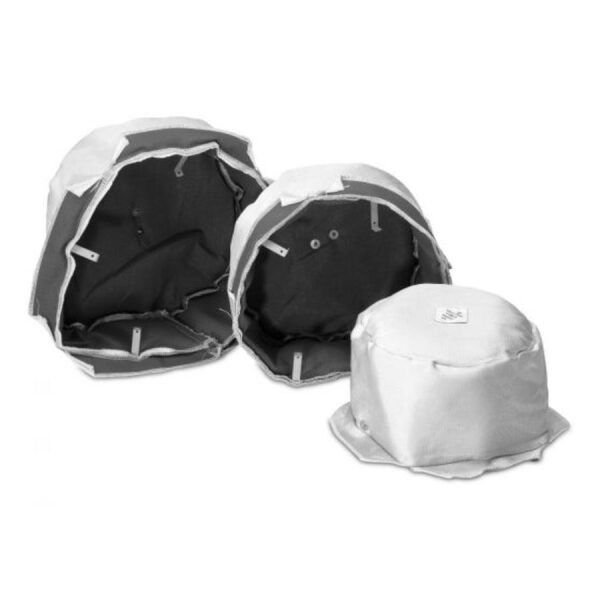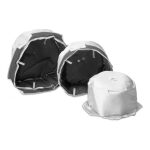- Kirjeldus
Kirjeldus
– Designed to cover the rear of in-ceiling and in-wall speakers, a fire and acoustic hood is a legal requirement for many new buildings. But whether legally required or not, we'd recommend them as a safety precaution. Using a fire and acoustic hood helps resist the spread of fire through the floors of a building and to reduce the transmission of noise to adjacent rooms and properties. It's a requirement for all speakers that are installed below any habitable rooms and escape routes.
– The hoods maintain fire rating integrity of the ceiling to which they are fitted, thus enabling 30 minutes or 60 minutes of fire rating to be maintained. Tested at the UK Building Test Centre and complies with Part B and Part E of UK building regulations – reports are available on request.
– When a speaker is installed into a ceiling or wall it can help transmit unwanted sound, potentially into another property, even when the speaker is not in use. Adding these hoods effectively restores the acoustic integrity of the ceiling or wall. When the speaker is in use it can also reduce the rear transmission of sound by around 10dB over the mid to high frequency range. Preventing the transmission of low (bass) frequencies is a specialist field and may require substantial additional treatment.
– Woven Glass Fabric: Thickness – 0.40mm, Weight/m2 – 430 g/m2
– Warp count: 1360 d’tex
– Finish: Starch weave lock
– Physical form/appearance: Solid, voluminous material, more or less elastic.
– Specific gravity: 10-600 kg/m3
– Solubility in water: Insoluble
– Odour: None or mild odour
– Flash ignition point: Between 315C to 370C
– Decomposition temperature: Above 180C
– Thermal energy: 28 000 KJ/kg
– Stability and reactivity: The product is stable at temperatures between -40C and +12C
– Auto-ignition point: Between 370C to 427C (ASTM D 1929)
– for: QI50, IC125





